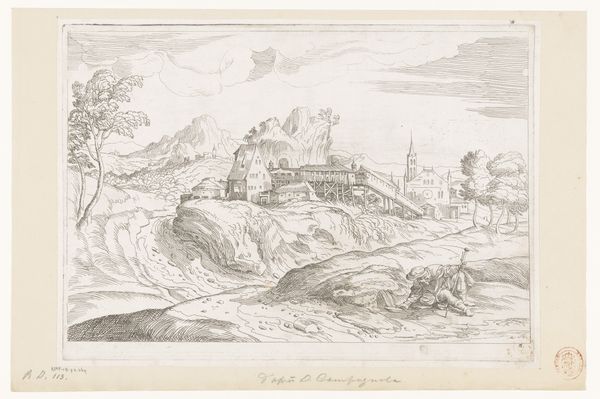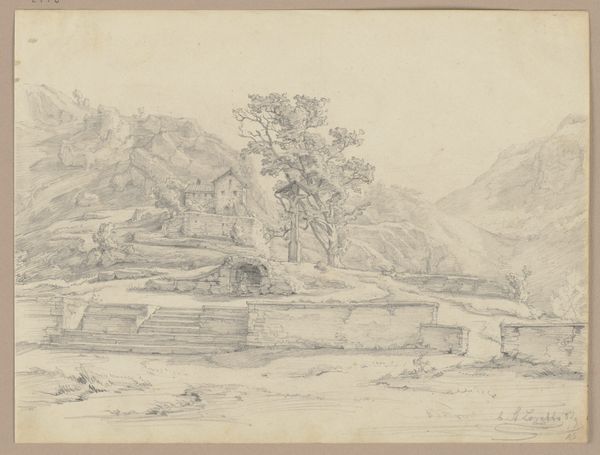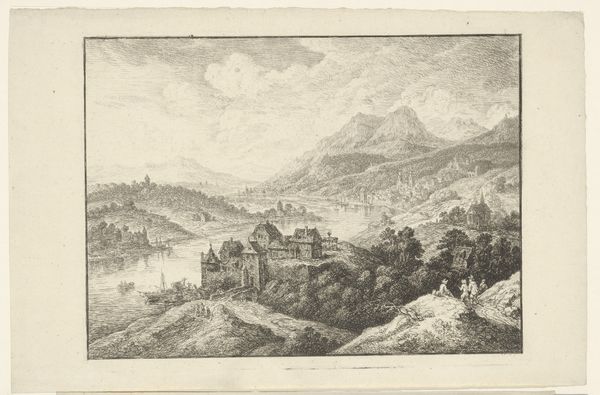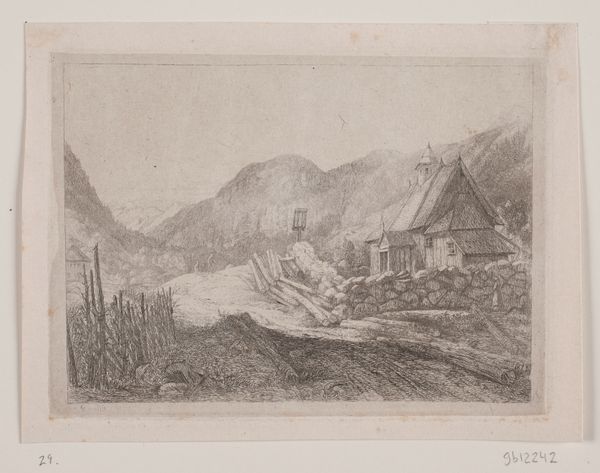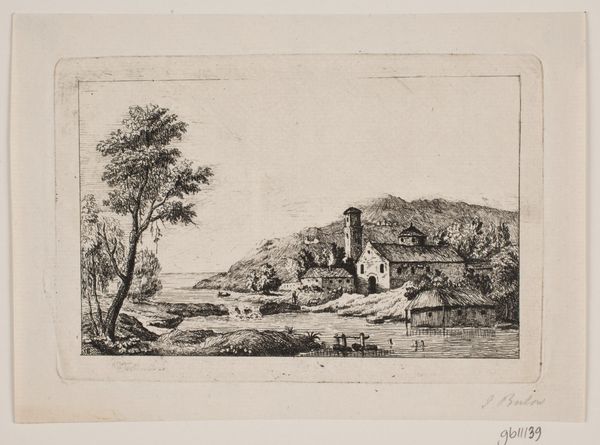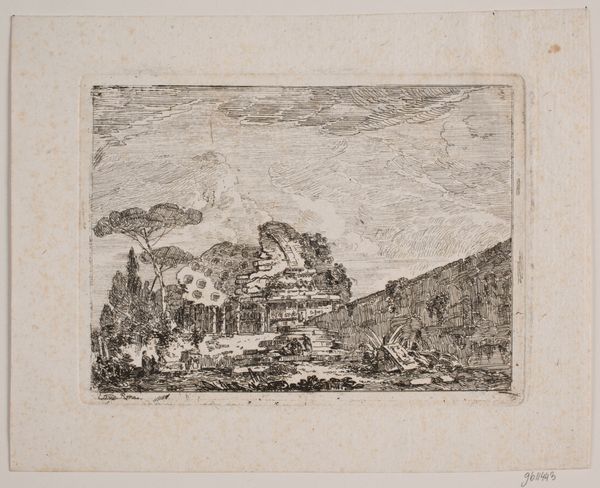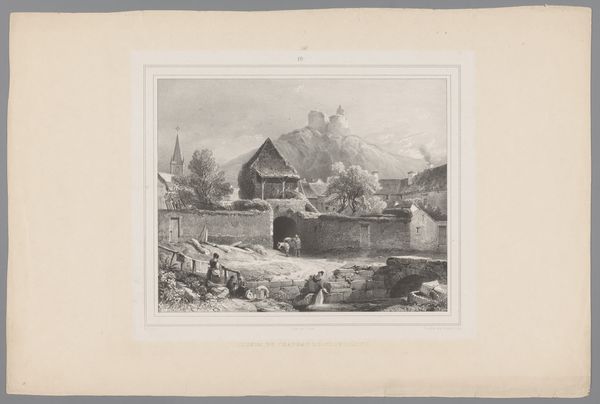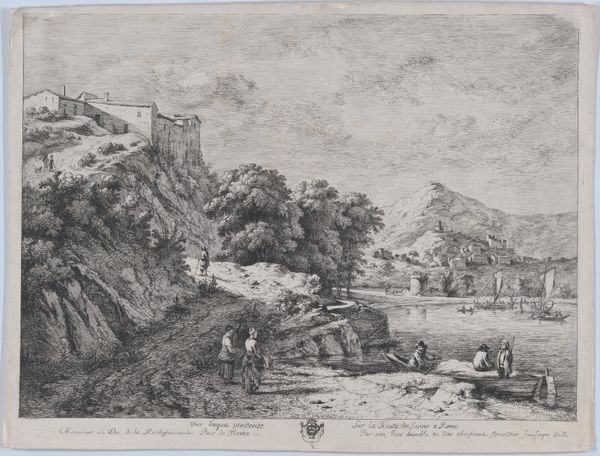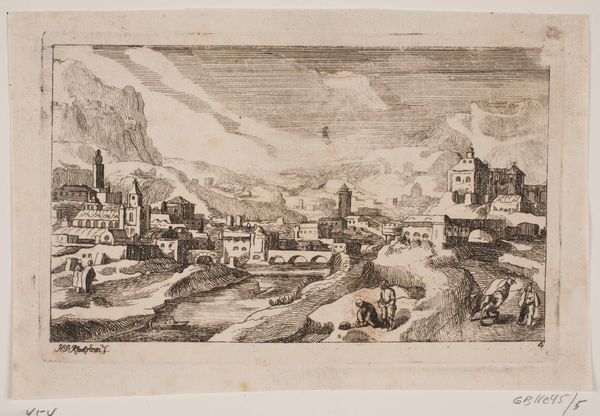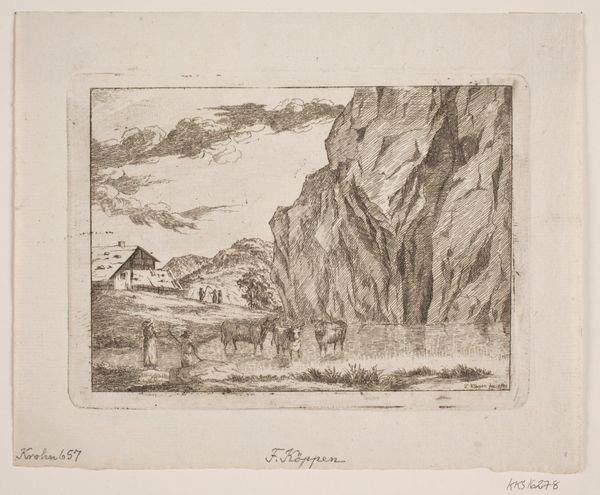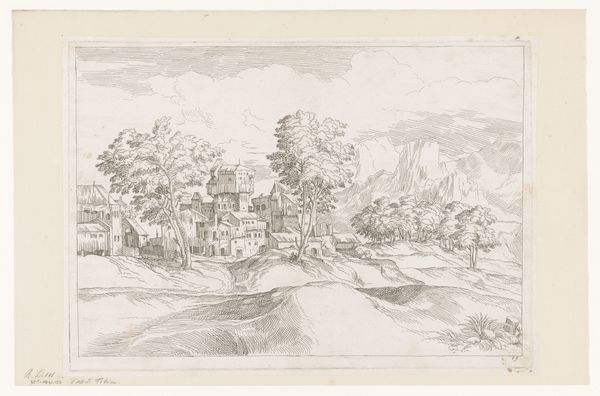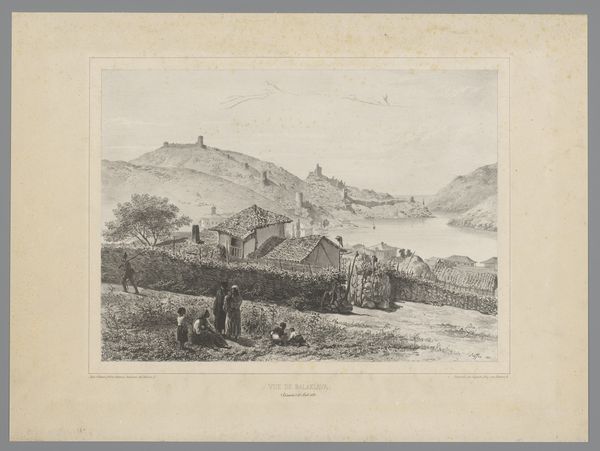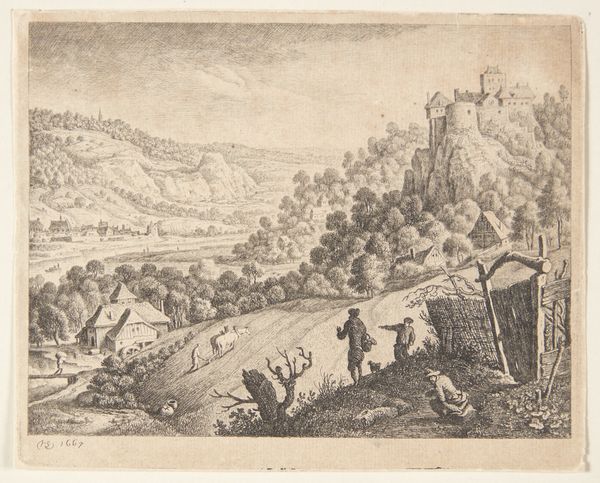
drawing, print, etching, engraving
#
drawing
# print
#
etching
#
landscape
#
etching
#
romanticism
#
engraving
Dimensions: 105 mm (height) x 141 mm (width) (plademaal)
Curator: Look at this print, Louis Gurlitt's "Landscape with a Wooden Church", created in 1836. He captured the scene through etching and engraving, a testament to the era's embrace of landscape. What are your initial thoughts? Editor: It feels serene but imposing, a quiet power. The stark lines draw you in. The way the light falls makes the church feel like a sentinel, standing guard in this wild terrain. There is a vulnerability there. Curator: The placement of the church is not accidental. In the romantic era, religious structures stood as cultural symbols amidst an often brutal landscape, speaking to an almost utopian sensibility rooted in spirituality. It reflected anxieties of industrialization, longing for simpler times. Gurlitt's decision to place a lone figure hiking the path heightens this effect. Editor: Exactly! The lone traveler amplifies that feeling of pilgrimage, doesn't it? Churches are laden with social and historical significance. They symbolize both belonging and exclusion, which surely carries weight, situated in the heart of a vast natural landscape such as this. It invites consideration of power dynamics and their negotiation within the human experience. Curator: Precisely! This is further reinforced by the etching medium which suggests the fragility of time and culture. Gurlitt's method allows for examination of themes relevant even in our contemporary experience with the social contract. He is doing more than depicting a landscape, he critiques structures within a rapidly evolving social context. Editor: Looking at the print again, I find myself pondering the symbolism further. Consider how churches served not only spiritual, but civic roles as markers of community. Here, in the etching, one reflects on how these structures negotiate the human story in nature. Gurlitt encourages the consideration of how cultural artifacts mirror the values of those who engage with the structures in these constructed communities. Curator: Ultimately, Gurlitt provides a meditation on space, history, and belief in the modernizing world. His landscape provides enduring considerations on both our natural and our constructed environment. Editor: A poignant reflection that stays with you long after you've stepped away.
Comments
No comments
Be the first to comment and join the conversation on the ultimate creative platform.
